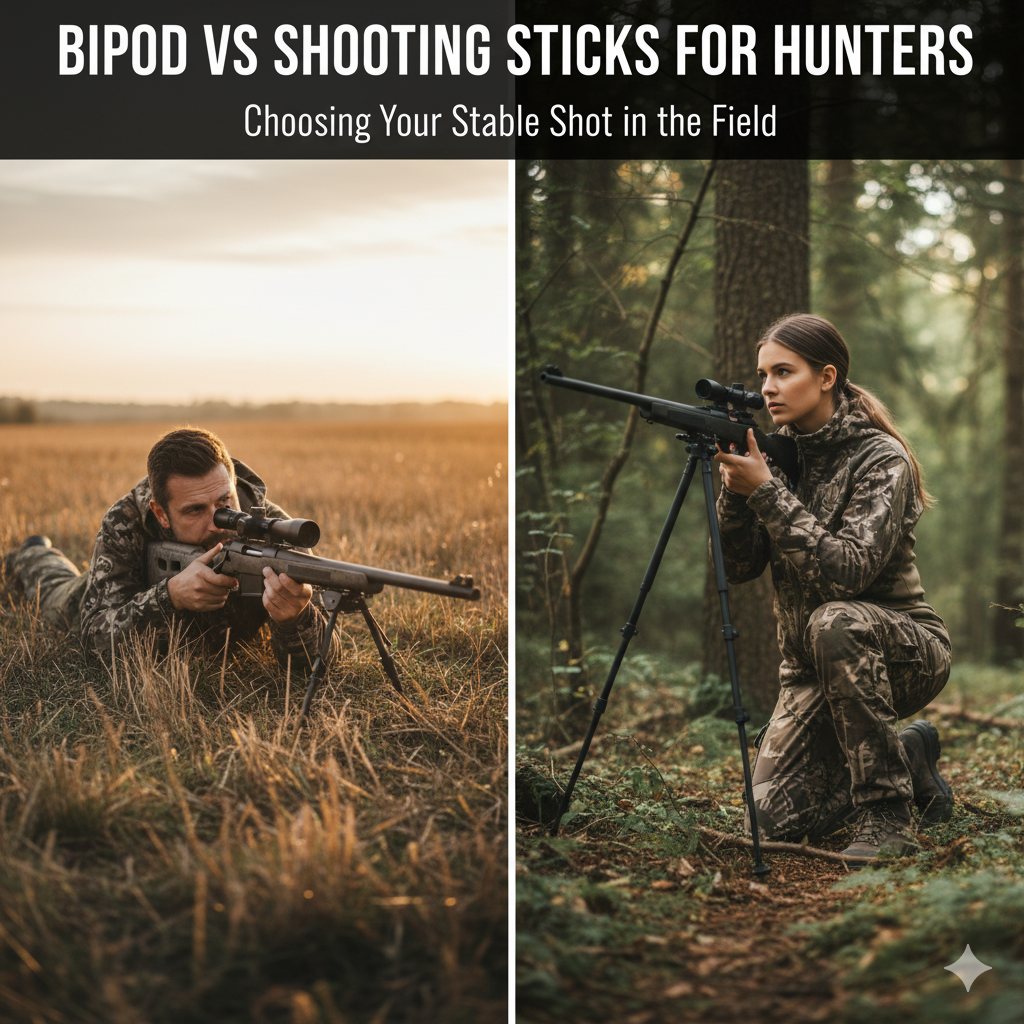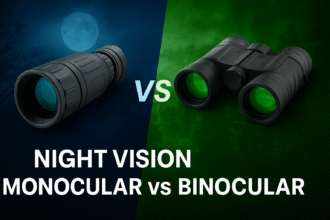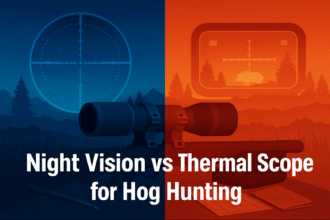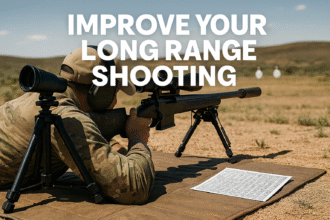Bipod vs Shooting Sticks for Hunters: Which One Should You Choose?

Every hunter knows that a steady shot can make or break a hunt. Whether you’re pursuing deer through dense woods or targeting coyotes on open plains, stability is the key to accuracy. That’s where bipods and shooting sticks come in two of the most popular shooting supports that help hunters achieve clean, ethical shots.
But which one is better for your style of hunting? In this in-depth guide, we’ll compare bipods vs shooting sticks, exploring their pros, cons, use cases, and expert recommendations so you can confidently choose the best shooting support for your next hunt.
Table of Contents
- What Is a Bipod?
- What Are Shooting Sticks?
- Bipod vs Shooting Sticks: Quick Comparison
- Advantages of Using a Bipod
- Disadvantages of Bipods
- Advantages of Shooting Sticks
- Disadvantages of Shooting Sticks
- Hunting Scenarios: Which One Should You Use?
- Choosing Between Bipods and Shooting Sticks
- Top Brands to Consider
- Expert Tips for Better Accuracy
- When to Use Both
- Final Verdict: Bipod vs Shooting Sticks
- Conclusion
What Is a Bipod?
A bipod is a two-legged shooting rest that attaches directly to your rifle, usually on the fore-end or sling swivel stud. Once mounted, it keeps the rifle steady while you aim and shoot.
Hunters and marksmen love bipods for their rock-solid stability especially for prone or long-range shooting. You’ll often find them used in varmint hunting, target shooting, and tactical applications where precision matters most.
Key Features:
- Two adjustable legs for support
- Mounted directly on the rifle
- Lightweight aluminum or carbon-fiber construction
- Height range typically between 6–13 inches
What Are Shooting Sticks?
Shooting sticks are portable supports that act as temporary rests for your firearm. Unlike bipods, they’re not attached to your rifle. They come in one, two, or three-legged versions also known as monopods, bipod sticks, or tripods depending on how much stability you need.
Key Features:
- Adjustable height for sitting, kneeling, or standing
- Quick setup and takedown
- Compact and lightweight
- Commonly used by mobile hunters and spot-and-stalk shooters
Shooting sticks shine in situations where you need to move frequently, set up quickly, and shoot from different positions.
Bipod vs Shooting Sticks: Quick Comparison
| Feature | Bipod | Shooting Sticks |
|---|---|---|
| Mounting | Attached to rifle | Freestanding |
| Legs | 2 | 1–3 |
| Height Range | Limited (mostly prone) | Adjustable for all positions |
| Weight | Adds weight to rifle | Separate, lightweight |
| Setup Speed | Instant once attached | Quick but manual setup |
| Best Use | Long-range & prone | Spot-and-stalk & varied terrain |
| Portability | Less portable | Highly portable |
| Stability | Very high | Moderate to high |
Advantages of Using a Bipod
1. Maximum Stability
A bipod locks your rifle into a stable position, significantly reducing movement and increasing precision. It’s ideal for long-range shots where even slight shaking can throw off accuracy.
2. Consistent Shot Placement
Because the bipod remains attached, it ensures consistent positioning between shots perfect for zeroing scopes or shooting multiple rounds at long distances.
3. Hands-Free Operation
When your rifle rests on a bipod, your hands are free for spotting, rangefinding, or adjusting optics increasing overall shooting efficiency.
4. Quick Deployment
With a flick of your hand, you can drop the bipod legs and take your shot in seconds ideal for ambush or predator setups.
Disadvantages of Bipods
1. Limited Height Adjustability
Most bipods are designed for prone or low sitting positions. If you need to shoot from a kneeling or standing position, a bipod becomes impractical.
2. Front-Heavy Rifle
Adding a bipod increases the forward weight of your rifle, which can make carrying or quick shouldering more difficult over long hunts.
3. Poor Performance on Uneven Terrain
On rough or sloped ground, keeping both bipod legs evenly planted can be tricky. Some premium models have swivel or tilt features, but setup time increases.
Advantages of Shooting Sticks
1. Highly Adjustable
From sitting to standing, shooting sticks adapt to your position instantly. Many models extend from 20 inches to over 60 inches, making them ideal for hunters in variable terrain.
2. Ultra Portable
Lightweight carbon-fiber or aluminum sticks fold compactly, often fitting inside or alongside your hunting pack. Some even double as trekking poles.
3. Versatile Applications
You can use shooting sticks not just for stabilizing your rifle, but also for supporting binoculars, spotting scopes, or cameras adding extra value.
4. Perfect for Mobile Hunters
Spot-and-stalk hunters or bowhunters who switch between glassing and shooting positions benefit greatly from the speed and flexibility of shooting sticks.
Disadvantages of Shooting Sticks
1. Less Stable Than Bipods
Even tripod shooting sticks can’t match the firm stability of a mounted bipod. Wind, uneven terrain, or recoil can cause movement.
2. Requires Practice
Without proper technique, your rifle can wobble or slip from the “V” rest. It takes practice to master consistent use.
3. Slower for Follow-Up Shots
Since the rifle isn’t fixed to the support, recoil often moves it off target, forcing you to realign before your next shot.
Hunting Scenarios: Which One Should You Use?
1. Long-Range Varmint or Predator Hunting
Best Choice: Bipod
If you’re lying prone for long-range shots say, coyote or prairie dog hunting a bipod provides unmatched accuracy and steadiness.
2. Spot-and-Stalk Deer Hunting
Best Choice: Shooting Sticks
When covering ground, you’ll appreciate lightweight sticks that deploy instantly when you spot a buck. You can shoot from kneeling or standing positions in thick cover.
3. Tree Line or Ground Blind
Best Choice: Either
If you’re sitting in a blind or on a hillside, both can work. A bipod gives you steady precision for stationary hunts, while shooting sticks let you adjust height in seconds.
4. Mountain or Alpine Hunts
Best Choice: Shooting Sticks
In uneven, rocky terrain, bipods can lose balance. Shooting sticks adjust to any slope and offer better flexibility when changing shooting angles.
5. Target Practice or Range Shooting
Best Choice: Bipod
For consistency, a bipod is your best bet for range practice, zeroing scopes, or shooting competitions.
Choosing Between Bipods and Shooting Sticks
When comparing bipod vs shooting sticks, consider these key factors:
1. Terrain
- Flat/Open Ground: Bipods shine for prone shots.
- Mountain/Brushy Terrain: Shooting sticks are easier to level.
2. Mobility
- Stationary Hunters: Bipods are more efficient.
- Active/Moving Hunters: Shooting sticks provide flexibility.
3. Shooting Position
- Prone or Bench: Bipod
- Standing or Kneeling: Shooting sticks
4. Weight
- If you hike long distances, every ounce counts go for lightweight shooting sticks.
- If you hunt from a fixed position, a heavier bipod is worth the trade-off.
Top Brands to Consider
| Category | Brand | Popular Model | Price Range |
|---|---|---|---|
| Bipods | Harris | S-BRM Series | $120–$180 |
| Bipods | Magpul | M-LOK Bipod | $100–$150 |
| Shooting Sticks | Primos | Trigger Stick Gen 3 | $80–$160 |
| Shooting Sticks | BOG | DeathGrip Tripod | $120–$250 |
Expert Tips for Better Accuracy
Using Bipods:
- Preload the bipod: Lean slightly into it to create forward tension.
- Add a rear rest: A small bag behind the stock enhances accuracy.
- Adjust leg height evenly: Prevents cant and uneven recoil.
Using Shooting Sticks:
- Practice transitions: Move smoothly from standing to kneeling positions.
- Control breathing: Combine stability with breath discipline for perfect timing.
- Adjust stance width: Find your balance before pulling the trigger.
When to Use Both
Some hunters carry both a compact bipod attached to the rifle for prone shots and a collapsible tripod stick for taller angles. This combo covers nearly every field scenario.
If you’re hunting multiple terrains plains, woods, or high country having both ensures you’re never caught without a stable rest.
Final Verdict: Bipod vs Shooting Sticks
| Scenario | Winner | Why |
|---|---|---|
| Long-Range or Prone | Bipod | Maximum stability and precision |
| Mobile or Stalk Hunting | Shooting Sticks | Lightweight and fast to deploy |
| Uneven Terrain | Shooting Sticks | More adaptable and flexible |
| Stationary Hunting | Bipod | Consistent and hands-free |
| All-Around Hunting | Both | The most versatile setup |
Conclusion
Both bipods and shooting sticks are invaluable tools for hunters who demand accuracy, stability, and ethical shots. The key is matching the right gear to your hunting environment.
If you hunt long-range from prone positions choose a bipod.If you stalk, move frequently, or shoot from standing or kneeling choose shooting sticks.And if you want the best of both worlds, carry a lightweight version of each.
No matter which you choose, practice is essential. Get comfortable deploying your rest quickly, adjusting angles, and shooting under real conditions. In hunting, precision isn’t just about gear it’s about mastering your craft.






